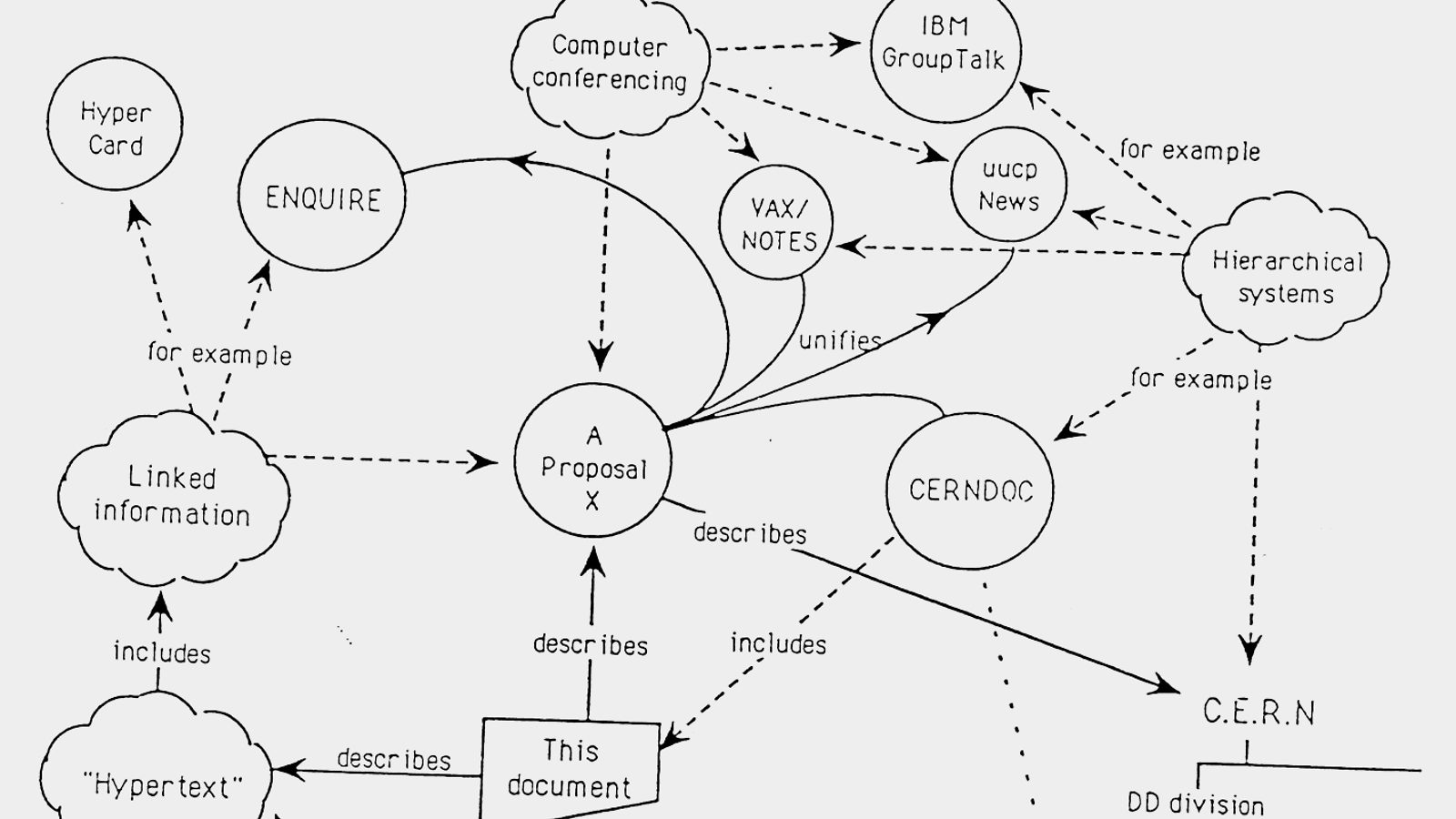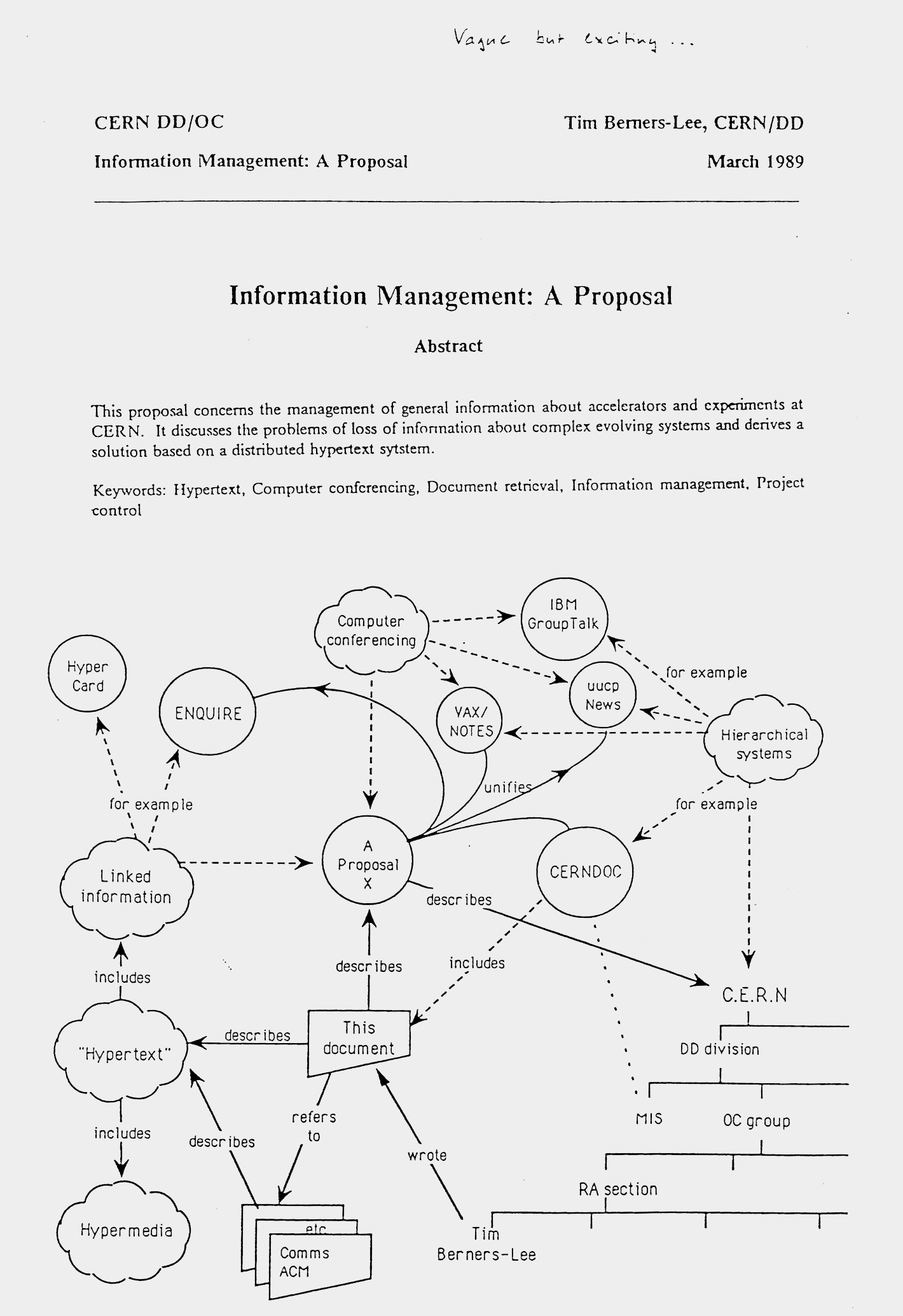In March 1989 Tim Berners-Lee, a young computer scientist at the European particle physics laboratory CERN, sent a memo to his boss, Mike Sendall, with the title “Information Management: A Proposal.”
On the cover was a bewildering array of bubbles and boxes with arrows pointing between them. Inside was the blueprint for the World Wide Web.
Mike had a reputation for recognizing a good idea when he saw one. “Vague,” he wrote on the cover, “but exciting,” and he encouraged his young protege to continue.
The following year, Berners-Lee set to work on the first browser and server, defining the concepts of HTTP, HTML, and the URL. By Christmas, the Web was up and running between two offices at CERN.
In 1994, CERN put the Web software in the public domain, ensuring that it would remain an open standard.
Today, the Web has by far outgrown its origins, but it is no accident that it began as a collaborative tool for particle physics.








